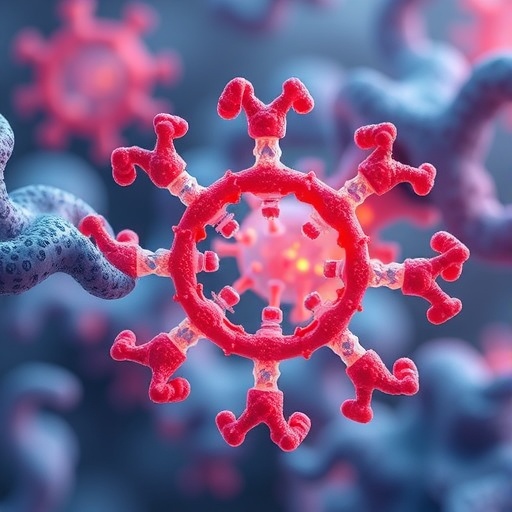Amid the escalating global challenge of antibiotic resistance, the scientific community is urgently seeking alternatives to conventional antibiotics. Antimicrobial peptides (AMPs), innate molecules that serve as natural defenders across species, have garnered significant attention due to their broad-spectrum activity and multifaceted mechanisms. Recent advances leveraging artificial intelligence, nanotechnology, and integrated interdisciplinary methodologies have propelled the design and application of AMPs into a new era, promising unprecedented efficacy and safety profiles.
Central to this revolution is the integration of artificial intelligence frameworks capable of rationally designing and generating novel AMPs with tailored functionalities. By analyzing vast datasets encompassing peptide sequences and three-dimensional structures, these AI-driven platforms can predict and synthesize peptides optimized for specific antimicrobial mechanisms. Such approaches not only accelerate discovery but also provide insights into how AMPs interact with microbial membranes, induce oxidative stress, or modulate host immune responses, which are critical for combating resistant pathogens.
A consortium of leading Chinese research institutes—including Zhejiang University, Dalian University of Technology, Ocean University of China, the Chinese Academy of Sciences, and Guizhou Medical University—has spearheaded innovations in this domain. Their collaborative efforts reflect a convergence of computational biology, synthetic biology, and materials science, resulting in AMPs with enhanced potency and improved stability.
One notable breakthrough showcased how applying protein language models alongside reinforcement learning algorithms expedited the design of broad-spectrum AMPs. These peptides demonstrated remarkable in vitro activity against multidrug-resistant bacterial strains at minimal inhibitory concentrations in the low micrograms per milliliter range. Importantly, longitudinal serial passaging assays revealed a negligible propensity for resistance development, a persistent obstacle in antimicrobial therapy.
Complementing bacterial targeting strategies, researchers at Guizhou Medical University harnessed a machine learning framework fused with multi-objective optimization to create antifungal peptides. This platform adeptly predicts sequences capable of disrupting fungal membranes and impairing mitochondrial functions simultaneously, thereby reducing the likelihood of fungal resistance. Such dual-action peptides symbolize a paradigm shift toward precision targeting of complex pathogens.
Nanotechnology innovations further augment the therapeutic potential of AMPs. The Chinese Academy of Sciences has engineered enzyme-responsive hydrogels that facilitate localized and controlled AMP release, particularly in bone marrow infections where conventional therapies falter due to poor bioavailability. Meanwhile, Fuzhou University developed sophisticated metal-peptide complexes capable of generating reactive oxygen species, synergizing antimicrobial activity with enhanced wound healing properties—a critical advancement for treating chronic and infected wounds.
The applicability of these technologies extends beyond health care. Agricultural systems benefit from AMPs as sustainable pesticides that circumvent environmental hazards associated with chemical agents. Similarly, the food industry explores their roles as natural preservatives, leveraging their multifunctionality to inhibit spoilage and pathogenic microbes, thereby ensuring food safety and extending shelf life.
Future trajectories in AMP research emphasize integrative strategies that meld artificial intelligence with multi-omics data, synthetic biology, and the development of smart biomaterials. Through these convergent technologies, researchers aim to address long-standing challenges including cost-efficient production, peptide stability under physiological conditions, and real-time resistance monitoring. This holistic vision aspires to transform AMP-based therapies from laboratory curiosities into broadly accessible clinical realities.
The rapid design cycles enabled by advanced computational tools indicate a forthcoming era where peptides can be custom tailored with unprecedented precision. Such bespoke therapeutics have the potential not only to eradicate resistant microorganisms but also to fine-tune immune modulation and promote regenerative processes, opening avenues for interventions in infectious diseases, immune disorders, and tissue engineering.
Funding support from the National Natural Science Foundation of China has been instrumental in advancing these multidisciplinary projects. The integration of researchers with expertise spanning medicinal plant applications, computational biology, public health, and natural product research underscores the collaborative model driving this innovation pipeline.
As the scientific community continues to decipher the complex interplay between peptide structures, microbial targets, and host responses, the deployment of these next-generation AMPs promises to reshape the antimicrobial landscape. The fusion of AI-driven discovery and precision targeting heralds a future where antimicrobial resistance is met with dynamic, adaptable, and effective molecular therapies.
This groundbreaking research was detailed in the article titled “Harnessing Innovations in Antimicrobial Peptide Design: From AI-Driven Discovery to Precision Targeting Mechanisms,” published on July 11, 2025, in the journal Food & Medicine Homology. Continued exploration and translation of these technologies hold immense promise for global health and sustainable development.
Subject of Research: Antimicrobial peptides and their design via AI-driven methods for combating antibiotic resistance
Article Title: Harnessing Innovations in Antimicrobial Peptide Design: From AI-Driven Discovery to Precision Targeting Mechanisms
News Publication Date: 11-Jul-2025
Web References: http://dx.doi.org/10.26599/FMH.2025.9420121
Image Credits: Food & Medicine Homology, Tsinghua University Press
Keywords: antimicrobial peptides, AI-driven design, antibiotic resistance, nanotechnology, peptide therapeutics, machine learning, reinforcement learning, multi-objective optimization, enzyme-responsive hydrogels, reactive oxygen species, synthetic biology, drug-resistant bacteria
Tags: AI-driven antimicrobial peptide designantibiotic resistance alternativesartificial intelligence in peptide researchcollaborative research in peptide innovationcomputational biology and AMPsenhancing peptide stability and potencyhost immune response modulationinterdisciplinary approaches in AMP developmentmicrobial membrane interactionsnanotechnology in antimicrobial strategiesnext-generation antimicrobial peptidestailored functionalities of antimicrobial peptides





